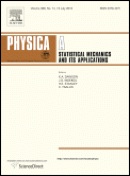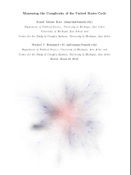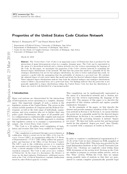A Mathematical Approach to the Study of the United States Code
The United States Code (Code) is a document containing over 22 million words that represents a large and important source of Federal statutory law. Scholars and policy advocates often discuss the direction and magnitude of changes in various aspects of the Code. However, few have mathematically formalized the notions behind these discussions or directly measured the resulting representations. This paper addresses the current state of the literature in two ways. First, we formalize are presentation of the United States Code as the union of a hierarchical network and a citation network over vertices containing the language of the Code. This representation reflects the fact that the Code is a hierarchically organized document containing language and explicit citations between provisions. Second, we use this formalization to measure aspects of the Code as codified in October 2008, November 2009, and March 2010. These measurements allow for a characterization of the actual changes in the Code over time. Our findings indicate that in the recent past, the Code has grown in its amount of structure, interdependence, and language.
United States Code
Reingold-Tilford Circular Layout

Physica A:
Statistical Mechanics
and its Applications
(2010 Forthcoming)



Changes in Distribution of
Section Entropy 2008-2010

Related Papers
Daniel Katz & Michael Bommarito, Measuring the Complexity
of the United States Code
(Coming Soon)
Michael Bommarito & Daniel Katz ,













